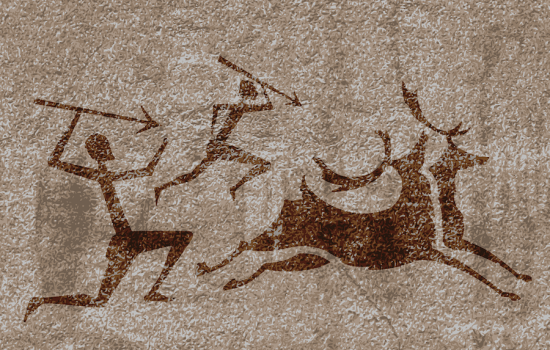Bethesda, MD – Researchers at the National Center for Complementary and Integrative Health (NCCIH) have announced the discovery of a revolutionary form of “needleless” acupuncture that may soon replace the use of surgical-grade, .25 millimeter thick stainless steel needles that have been in use for millennia.

10,000-year-old cave drawing of prehistoric veterinary acupuncture providers
Acupuncture, a component of Traditional Chinese Medicine developed sometime in the past 5 to 10,000 years, traditionally has involved the use of tiny needles, and also sometimes lasers, to treat specific points on the body in order to improve the flow of life energy, which is known as Qi. Developed intuitively through painstaking trial and error over many thousands of years, traditional Chinese acupuncture has proven time and time again its ability to ameliorate and even cure a variety of medical conditions. But despite its amazing historical track record, some proponents have worried about the future of acupuncture.
“This is a revolutionary leap forward in our ability to convince even the most acupuncture-hesitant people to open their minds to the benefits of acupuncture, ” Kuang Zhu LAC, Head of Pragmatic Acupuncture Research at NCCIH, explained. “The key was developing an acupuncture needle that is invisible to the untrained naked eye and seemingly lacking in material existence. I can see it though.”
Despite thousands of years of successful use, and reams of peer-reviewed positive studies in the medical literature, acupuncture practitioners have faced many barriers to widespread acceptance by both the general public and conventional medical providers. Zhu lists needle phobia and worry over possible pain, injury, and infection as potential roadblocks. He also worries that skeptical propaganda may play a role:
The internet can be a tremendous tool for gathering information, but anyone with a computer can write a blog post claiming that positive outcomes from acupuncture are subjective responses to placebo, or that it doesn’t matter where or even if the needles are inserted into the skin. Honestly I don’t know where they come up with this stuff.
The revolutionary new acupuncture delivery system first came to the attention of the NCCIH, and Director Josephine Briggs, M.D., when two men showed up one day claiming to be metallurgists capable of producing acupuncture needles of an almost unimaginably fine gauge. According to the men, their needles would be imperceptible to all but the most brilliant of researchers. And, most importantly, they would be completely pain and risk free without compromising effectiveness.
Zhu and the NCCIH have so far denied requests to witness the manufacturing process and have refused access to the new needles for inspection, citing the potential for ultra-weak spontaneous photon emission from the human eye to disrupt their cohesive non-existence. “Also the untrained hand will be unable to perceive the needles when held. And the untrained mind will fail to grasp their existence cognitively.”
Rather than waste time funding expensive randomized controlled trials comparing the new needles to sham acupuncture, the Pragmatic Acupuncture Research department has decided to rely on real world evidence. Individual acupuncture providers will have access to the new needles in just a few weeks, and the first published studies should be accepted by the end of the year. The NCCIH is confident that intelligent patients will be very happy with their results.
